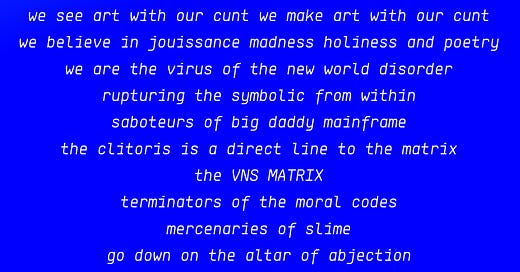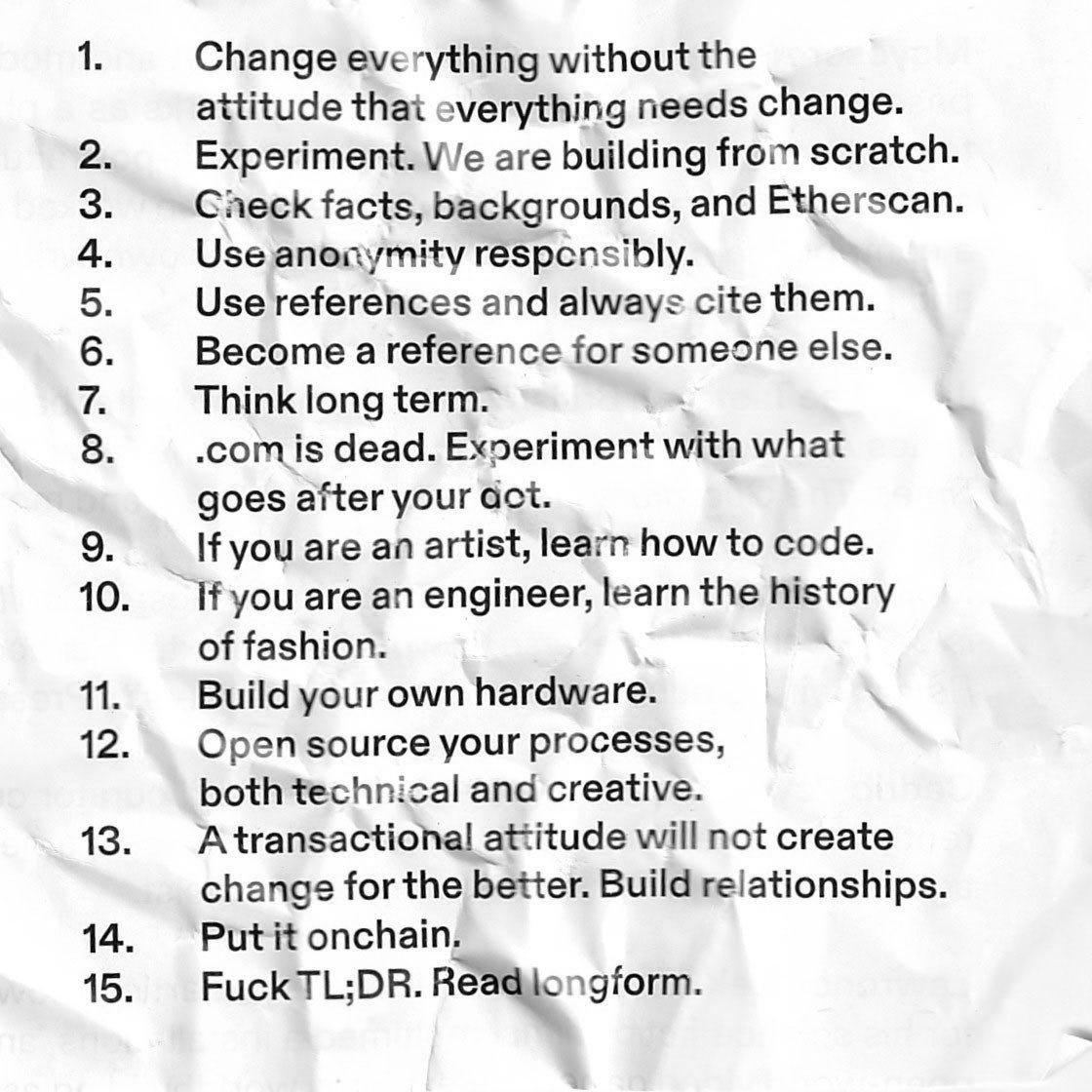Manifestos: poetry for the people
This week I’ve been writing manifestos.
Manifestos have been used for centuries by academics and artists to challenge conventions, spark debates and even explore the realms of the irrational. The Communist Manifesto (1848) written by Karl Marx and Friedrich Engels is perhaps the most well known example of this written art form, although no one these days has the attention-span to actually read it.
While the manifesto was once used by intellectuals to rally the public against capitalism, it is now ironically a trope of advertising copywriters. Writing a manifesto always helps me to sharpen my thinking and develop a tone of voice. We use them in every agency presentation as a way to connect a client’s toothpaste brief to the purpose-driven ideas we want to run.
Years of writing in this style has completely shot my ability to write academically. You will never see me use 7,600 words to outline a single idea. Also, when I was studying for my MA in Art History I would commonly get feedback on my essays that I wasn’t writing in complete sentences.
A complete sentence?
What is that?
I write for the people!
Grammar only hinders comprehension.
The way advertising is written, is the way people these days want to read. In an article on Right Click Save this week, poet Derek Beaulieu declared that the “most exciting… art form of our age is the advertising logo”. Beaulieu goes on to describe what contemporary poetry borrows from the language of advertising copy:
Poetry moves toward formal simplification, abbreviated statements on all levels of communication from the headline and the advertising slogan to the scientific formula — the quick, concentrated visual message, in other words. Remarkable words with letters bigger than aqueducts ringed with quicksilver, flamboyant and shocking, like advertising.
- WHEN POETRY TOOK OVER THE BLOCKCHAIN
Thanks to Wieden & Kennedy manifestos have been spilling out of the pages of presentations and onto telly ads. An ex-colleague who worked there said they would spend six months just refining the manifesto for a project; and once you’ve put that effort it why would you come up with a new idea for the spot? This trend saw our commercial breaks being filled with booming voice overs declaring “the world needs more cooks, because where there are cooks there is hope”. Nonsense for sure, but still a film a lot lovelier than the TV shows that likely preceded it:
Manifestos remind us of the transformative power of words and even in advertising they show the potential for collective action to bring about meaningful change. As I always say; not everyone is going to visit an exhibition about Blockchain poetry, but they will walk past a billboard.
Keep scrolling for my three favourite types of manifesto.
The List
This is a classic of the art manifesto, and one that I’ve never seen successfully applied to a client presentation. The list gives actionable tips to move you closer to the collective goal.
Manifesto as Manifestation
This is the type of manifesto that most often gets turned into a telly ad - and for that reason is the one I rarely put in front of clients! It’s a chance to set out the world that you are building, and acts as a mantra that can be manifested into being upon believing.
The pamphlet
Going back to the original style of Marx & Engles, or the Dadaists, I love a printed pamphlet manifesto. The idea that anyone may be handed it in the street really sharpens the demands. This example is lovely as it’s not just printed, but online has a scanned zine feel to it.





